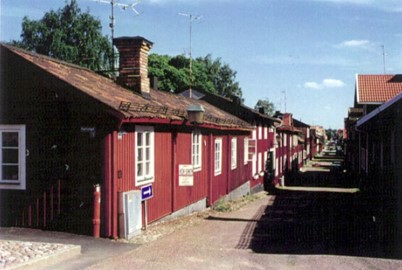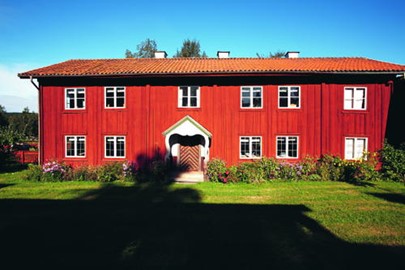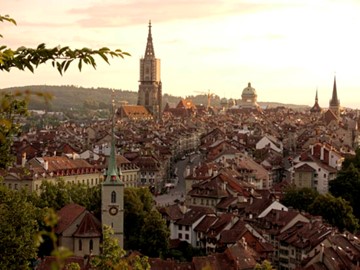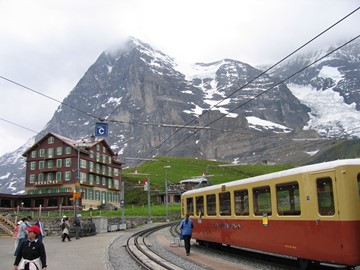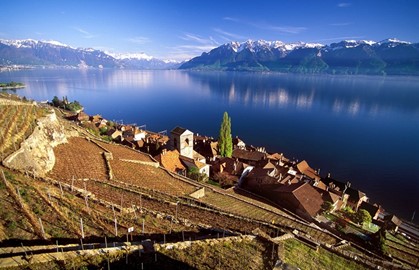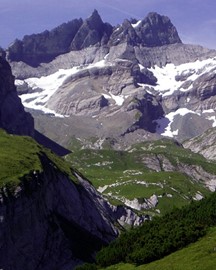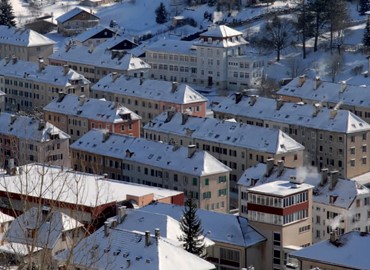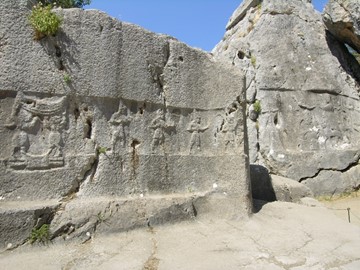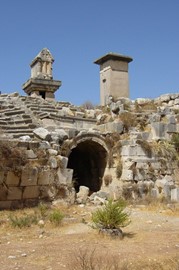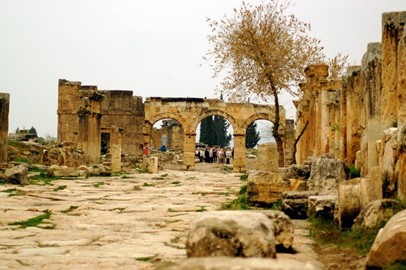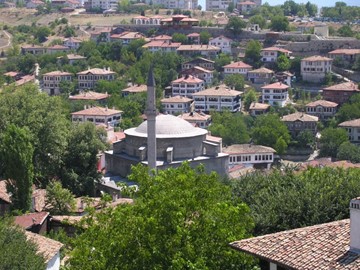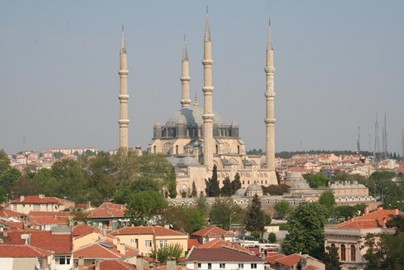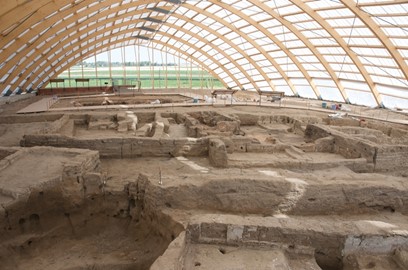region :: europe and north america
Gammelstad
Gammelstad, a UNESCO World Heritage site in Sweden, is a well-preserved example of a traditional Scandinavian church village. Established around a 15th-century stone church, it features over 400 wooden cottages historically used by rural parishioners for overnight stays during religious services and gatherings. This unique settlement reflects medieval customs and the region’s cultural heritage, earning its designation for its historical significance and architectural authenticity.
Laponian Area
This UNESCO World Heritage site in northern Sweden, within the Arctic Circle, spans 9,400 square kilometers of pristine wilderness, encompassing mountains, forests, rivers, and lakes across four national parks and two nature reserves. Recognized in 1996 for its natural beauty and cultural significance, it showcases ongoing geological processes and rich biodiversity while serving as a vital area for the indigenous Sámi people, who maintain their ancestral tradition of reindeer herding through seasonal migrat... Read More
Karlskrona
The Naval Port of Karlskrona, a UNESCO World Heritage site in Sweden, is a remarkably preserved late-17th-century naval city founded in 1680 by King Karl XI. Designed with a grid layout and Baroque influences, it served as a strategic base for Sweden’s navy, featuring intact original structures like fortifications, a shipyard, and residential areas. Its historical significance lies in its role as a model for European naval planning, blending military and civilian functions seamlessly. Today, it remains an a... Read More
Southern Oland
The Agricultural Landscape of Southern Öland, a UNESCO World Heritage site in Sweden, showcases a unique limestone plateau shaped by human activity for over 5,000 years. Its distinct features include ancient villages, arable fields, and grazing lands like the Stora Alvaret, reflecting a remarkable adaptation to the island's geology and climate. This living agrarian landscape preserves prehistoric settlements, medieval land divisions, and a rich biodiversity, offering a glimpse into a continuous cultural tra... Read More
Falun Mining Area
This UNESCO World Heritage site in Sweden encompasses a historic copper mine that operated for over a millennium, from the 10th century until 1992, significantly shaping the region’s industrial and cultural landscape. At its peak in the 17th century, it supplied two-thirds of Europe’s copper, influencing global mining technology and funding Sweden’s military endeavors. The site includes the expansive Great Pit, a result of a 1687 collapse, alongside a well-preserved 17th-century planned town, miners’ cottag... Read More
Grimeton Radio Station
Grimeton Radio Station, a UNESCO World Heritage site in Sweden, is a remarkably preserved early 20th-century long-wave radio station, operational since 1924. Built under the direction of engineer Ernst Alexanderson, it showcases pioneering technology with its massive Alexanderson alternator, capable of transatlantic communication. Today, it serves as a historical monument and museum, offering insight into the development of global telecommunications. Its unique industrial architecture and functional equipme... Read More
Farmhouses of Halsingland
The Farmhouses of Hälsingland, a UNESCO World Heritage site, are a collection of seven well-preserved timber farmhouses from the 19th century, showcasing a unique blend of rural architecture and folk art. Built by prosperous farmers, these homes feature elaborately decorated interiors with vibrant paintings and stencils, reflecting influences from Baroque and Rococo styles. Designated in 2012, they represent the peak of a centuries-old timber-building tradition and the social status of their owners. Many ar... Read More
Berne
The Old City of Berne, a UNESCO World Heritage site in Switzerland, is a well-preserved medieval town founded in the 12th century. Its sandstone buildings, arcaded streets, and historic fountains, including the iconic Zytglogge clock tower, showcase a unique blend of architectural charm and cultural significance. The city's layout, largely unchanged since the Middle Ages, reflects its rich history as a political and economic center. Today, it remains a vibrant testament to Switzerland's heritage, attracting... Read More
Abbey of St Gall
The Abbey of St Gall, a UNESCO World Heritage site in Switzerland, is a historic Benedictine monastery founded in the 8th century, renowned for its exceptionally preserved medieval architecture and cultural significance. Its Baroque cathedral and library, housing one of the world’s oldest collections of manuscripts, highlight its role as a center of learning and spirituality. The site exemplifies Carolingian-era design and remains a testament to centuries of European religious and intellectual history.
Benedictine Convent of St John
The Benedictine Convent of St John at Müstair, a UNESCO World Heritage Site in Switzerland, is an exceptional example of Carolingian-era monastic architecture, founded around 775, possibly by Charlemagne. Renowned for housing the country’s most significant collection of early medieval figurative murals from around 800, alongside Romanesque frescoes and stuccoes, it reflects over 1,200 years of religious and artistic history. The convent remains an active Benedictine community, blending spiritual life with c... Read More
Bellinzone
The Three Castles, Defensive Wall, and Ramparts of the Market-Town of Bellinzona form a UNESCO World Heritage site showcasing a remarkable medieval fortification system. This well-preserved ensemble includes three imposing castles—Castelgrande, Montebello, and Sasso Corbaro—linked by extensive defensive walls and ramparts. Designed to control strategic trade routes, the complex reflects a blend of architectural styles from the 13th to 15th centuries. Its historical significance and structural integrity make... Read More
Swiss Alps Jungfrau Aletsch
The Swiss Alps Jungfrau-Aletsch, a UNESCO World Heritage site, showcases a stunning landscape of towering peaks, expansive glaciers, and deep valleys, recognized for its exceptional natural beauty and geological significance. This protected region is home to the largest glacier in the Alps and a rich diversity of flora and fauna, thriving in one of Europe’s most pristine alpine environments. It serves as a vital testament to the Earth’s climatic and environmental evolution, drawing global attention for its ... Read More
Lavaux, Vineyard Terraces
The Lavaux Vineyard Terraces, a UNESCO World Heritage site in Switzerland, showcase a stunning landscape of steep, terraced vineyards cascading down to a serene lakeside. This historic wine-growing region, dating back to the 11th century, reflects centuries of human ingenuity in cultivating the land. The picturesque terraces, dotted with charming villages and ancient stone walls, produce renowned wines while preserving a unique cultural and natural legacy.
Swiss Tectonic Arena Sardona
The Swiss Tectonic Arena Sardona, a UNESCO World Heritage site in Switzerland, showcases a stunning example of mountain-building through continental collision. It features the Glarus Thrust, where ancient rocks dramatically overlie younger ones, offering a clear, three-dimensional view of tectonic processes that shaped the Alps. Recognized since the 18th century as a key geological site, it continues to inspire scientific study and captivate visitors with its rugged peaks, glaciers, and the famous Martinslo... Read More
La Chaux de Fonds and Le Locle
La Chaux-de-Fonds and Le Locle, located in Switzerland, form a UNESCO World Heritage site renowned for their unique urban planning and watchmaking heritage. These towns exemplify a harmonious blend of residential and industrial spaces, designed in the 19th century to support the burgeoning watch industry. Their grid-like layouts, with wide streets and neoclassical buildings, reflect an innovative approach to town planning tailored to the needs of skilled artisans. Today, they stand as living testimonies to ... Read More
Goreme and Rock Sites of Cappadocia
Göreme and the Rock Sites of Cappadocia, a UNESCO World Heritage site in Turkey, feature a surreal landscape of fairy chimneys, rock formations, and extensive underground cities carved into volcanic tuff. This historic region showcases a unique blend of natural wonders and human ingenuity, with ancient rock-cut churches, monasteries, and homes adorned with Byzantine frescoes. Its geological marvels and cultural significance make it a remarkable testament to early Christian and medieval life.
Divrigi
The Great Mosque and Hospital of Divriği, a UNESCO World Heritage site in Turkey, is an exceptional example of 13th-century Seljuk architecture, completed in 1228-1229 under the Mengujekids. This twin-structure complex seamlessly blends a richly ornamented mosque with an intricately designed hospital, showcasing masterful stone carvings and innovative engineering. Renowned for its elaborate portals and unique geometric patterns, it reflects a harmonious fusion of art, science, and spirituality. Its historic... Read More
Hattusha
Hattusha, the ancient capital of the Hittite Empire, is a UNESCO World Heritage site in Turkey renowned for its historical and archaeological significance. Flourishing during the Bronze Age, it served as a political and religious center, featuring impressive ruins such as temples, royal residences, and fortifications. Excavations have uncovered cuneiform tablets, offering insights into Hittite administration and culture. Today, it stands as a testament to one of the most influential civilizations of the anc... Read More
Nemrut Dag
Nemrut Dağ, a UNESCO World Heritage site in Turkey, is renowned for its ancient mountaintop sanctuary built in the 1st century BC by King Antiochus I of the Commagene Kingdom. The site features massive stone statues of gods, eagles, and lions, dramatically perched at an elevation of over 2,000 meters, offering a striking blend of Hellenistic, Persian, and local artistic influences. These colossal figures, some standing up to 9 meters tall, guard a royal tomb and are celebrated for their historical and cultu... Read More
Xanthos Letoon
Xanthos-Letoon, a UNESCO World Heritage site in Turkey, is a remarkable archaeological complex showcasing the ancient Lycian civilization's unique architecture and cultural heritage. Xanthos, the capital of Lycia, blends Lycian traditions with Hellenic influences, evident in its distinctive rock-cut tombs and pillar-mounted sarcophagi, while Letoon served as a significant religious sanctuary dedicated to the goddess Leto. The site is renowned for its well-preserved ruins, including a theater, temples, and i... Read More
Hierapolis Pamukkale
Hierapolis-Pamukkale, a UNESCO World Heritage site in Turkey, is renowned for its stunning natural and historical features. The site boasts gleaming white travertine terraces formed by calcium-rich thermal springs cascading down a hillside, creating a surreal, cotton-like landscape. Adjacent to this natural wonder lies the ancient Greco-Roman city of Hierapolis, founded in the 2nd century BCE, featuring well-preserved ruins such as a theater, necropolis, and the sacred Plutonium cave associated with the und... Read More
Safranbolu
The City of Safranbolu, a UNESCO World Heritage site in Turkey, is renowned for its well-preserved Ottoman architecture and historical significance. This charming city features traditional wooden houses, cobblestone streets, and ancient mosques, offering a glimpse into Turkey’s rich cultural past. Once a thriving trade hub along the Silk Road, it is particularly famous for its saffron production, which inspired its name. Today, Safranbolu attracts visitors with its authentic ambiance and historical landmark... Read More
Troy
The Archaeological Site of Troy, a UNESCO World Heritage site in Turkey, is renowned for its historical significance as the setting of the Trojan War from ancient Greek mythology. Excavations have revealed multiple layers of settlements spanning over 3,000 years, showcasing a blend of Bronze Age fortifications, temples, and artifacts. This site offers valuable insights into early urban development and intercultural exchanges in the ancient world. Today, it stands as a testament to human history, attracting ... Read More
Selimiye Mosque
The Selimiye Mosque, a UNESCO World Heritage site in Turkey, is an architectural masterpiece designed by the renowned Ottoman architect Mimar Sinan in the 16th century. Completed in 1575, it exemplifies the pinnacle of Ottoman Islamic architecture with its grand central dome, slender minarets, and intricate interior decorations featuring Iznik tiles and calligraphy. Built during the reign of Sultan Selim II, the mosque reflects the empire’s cultural and artistic zenith, serving as both a place of worship an... Read More
Çatalhoyuk
The Neolithic Site of Çatalhöyük, a UNESCO World Heritage site in Turkey, is one of the world’s oldest known human settlements, dating back to around 7500–5700 BCE. This prehistoric village is renowned for its well-preserved mudbrick houses, intricate wall paintings, and evidence of early agriculture and religious practices, offering a rare glimpse into Neolithic life. Its unique layout, with homes accessed via rooftops and no streets, reflects an egalitarian community that thrived for over a millennium. Ça... Read More




